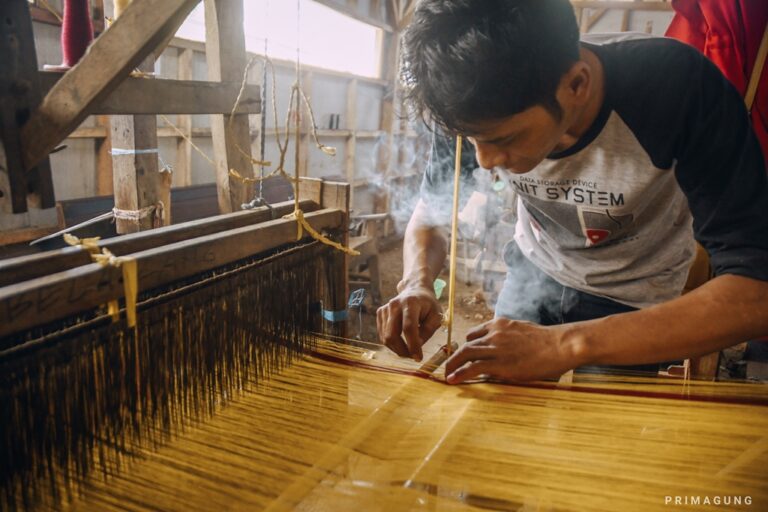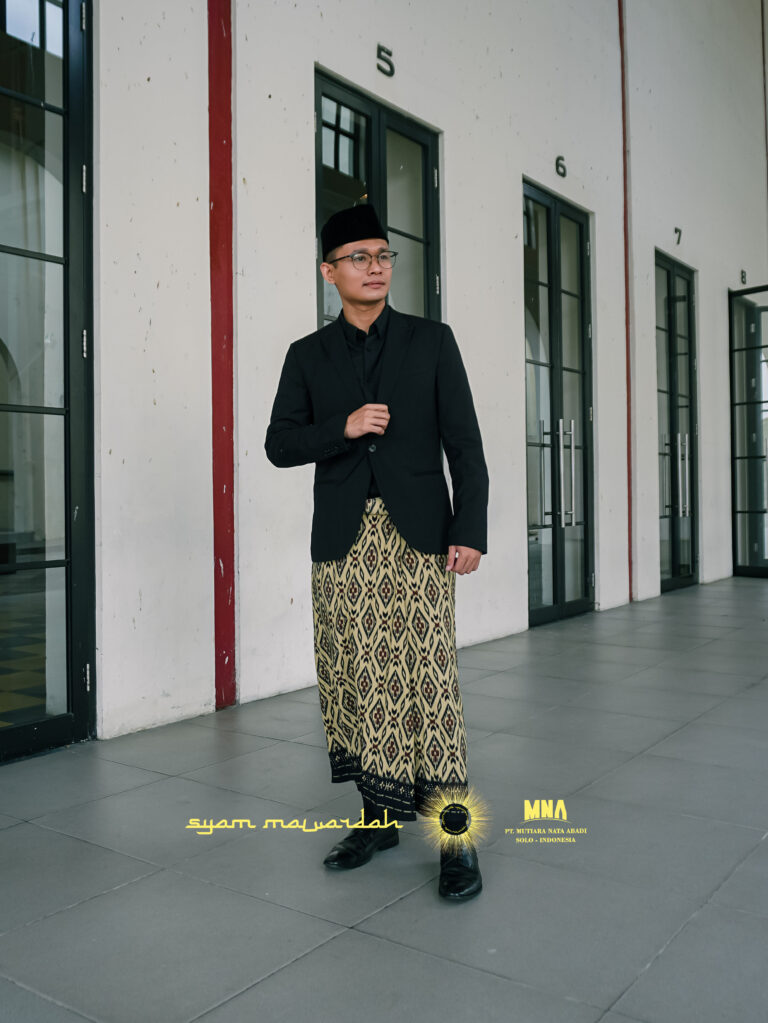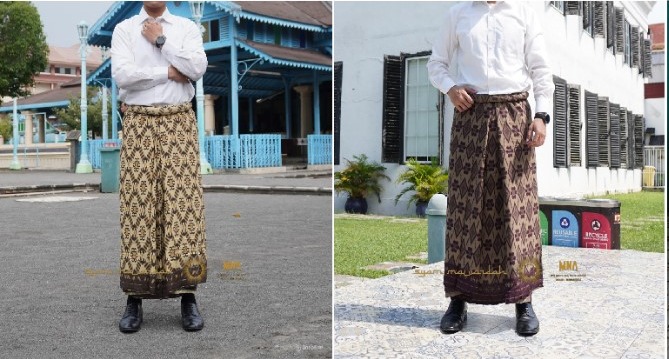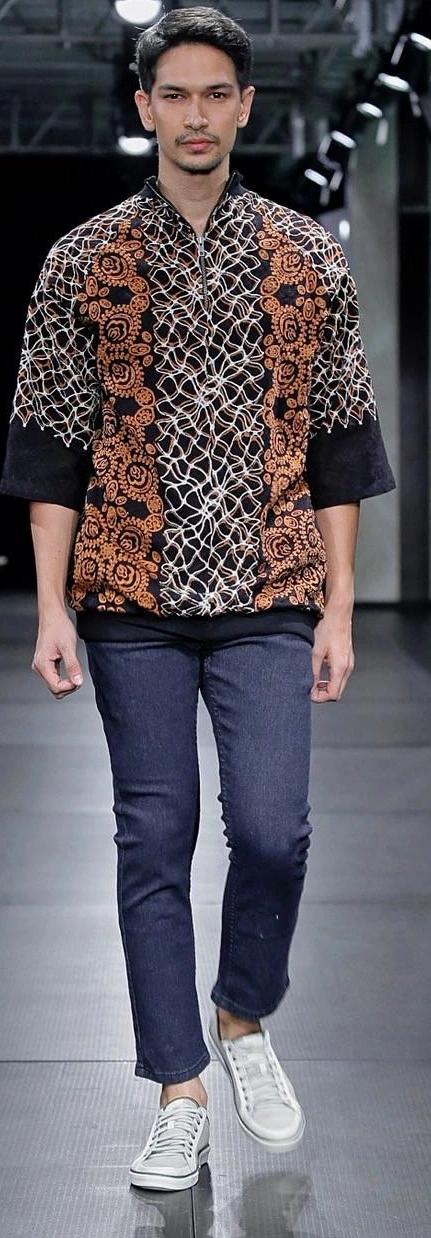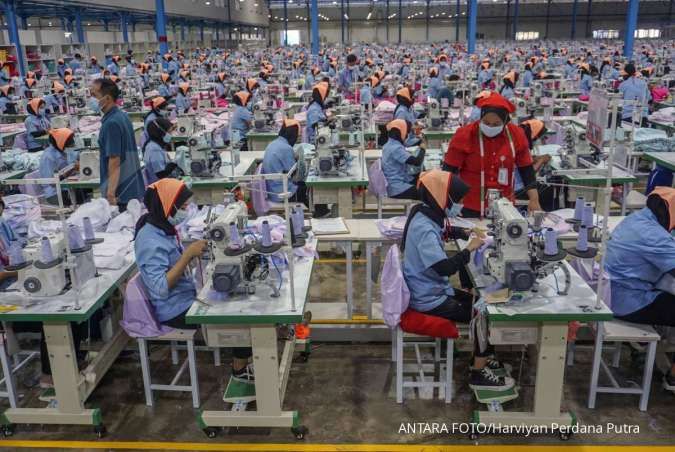- syammawardah164@gmail.com
- Jl. Manggar Raya No.5, Dusun I, Grogol, Sukoharjo 57552
Need help?
+62 812-2926-0664
Sarong Goyor as Cultural Heritage and Its Development in the Creative Industry
Sarongs Goyor, a typical Indonesian textile product, have become part of the culture and traditions of the people of Central Java and East Java. This sarong is known for its smooth texture, the strength of its weave, and the beauty of its motif. In this article, we will provide a historical explanation of the development of the goyor sarong from its initial appearance to its role in current Indonesian culture, emphasizing cultural, social and creative economic aspects.
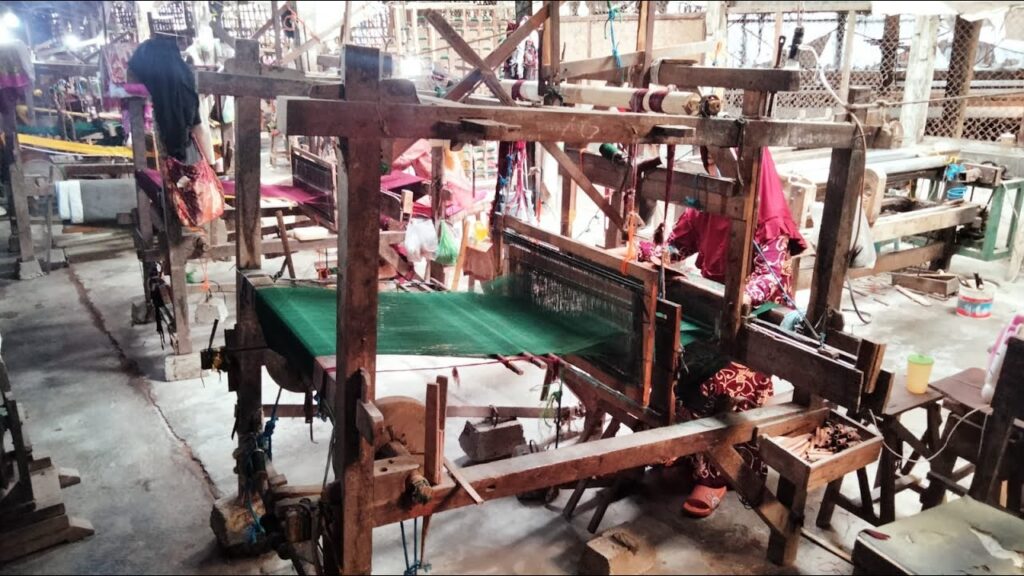
What was the beginning of the Sarong Goyor like?
Sarongs Goyor were first known in the early 20th century in the Central Java region, especially in the Sukoharjo and Tegal areas. The name “goyor” comes from Javanese which means “soft” or “smooth”, referring to the texture of the fabric which is very smooth and comfortable to use. Sarong Goyor production uses traditional weaving techniques that combine high quality rayon material with specially spun threads to produce strong but still soft fabric.
Goyor sarong production was first developed by local craftsmen around Central Java and East Java such as in Sukoharjo, Tegal and Gresik. They use a traditional loom called a “gedogan”, which allows them to create intricate patterns and motifs. The process of making goyor sarongs consists of several stages where each stage requires high skill and precision, starting from spinning thread, tying thread, dyeing colors, to weaving.
The Development of Sarung Goyor and Local Culture
At the beginning of its development, the goyor sarong was widely used in various traditional ceremonies and daily activities by Javanese people. This sarong is often worn at important events such as weddings, circumcisions and religious ceremonies. The beauty and quality of goyor sarongs are often used as a symbol of social status and wealth. Javanese people believe that wearing a goyor sarong on important occasions will bring good luck and blessings.
Goyor sarongs also play a very big role in the development of batik in Indonesia. Many of the motifs on goyor sarongs are inspired by traditional batik motifs, such as parang, kawung, and sidomukti. The combination of weaving and batik motif patterns creates its own uniqueness that differentiates Goyor sarongs from other common types of sarongs.
The Role of Economics and Trade
As time progressed, Goyor sarongs began to be known outside Central Java and East Java. In the mid-20th century, production of Goyor sarongs began to increase in line with increasing demand, both from within the country and abroad. With demand continuing to increase, craftsmen are starting to form cooperatives and joint business groups to increase production capacity and expand market coverage.
Goyor sarongs are not only local consumer goods, but are also exported to various countries, especially to Malaysia, Singapore, Brunei Darussalam, Yemen, and several countries on the African continent. With the development of exports of Goyor sarongs, it has made a significant contribution to the local economy in the areas producing these sarongs.
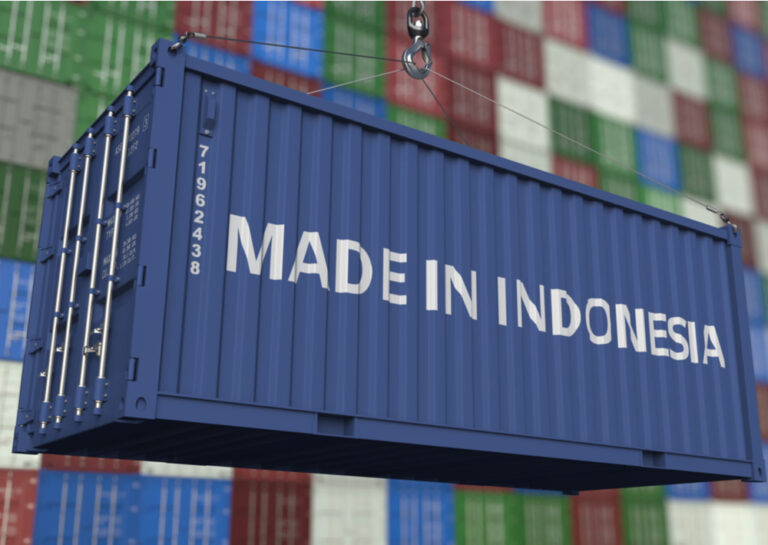
Technology and Innovation in the Production of Goyor Sarongs
With advances in technology, the production method for Goyor sarongs has also undergone very significant changes. Craftsmen are starting to adopt semi-automatic looms and printing methods which can increase production efficiency without reducing quality. However, there are still many craftsmen who maintain traditional methods to maintain the authenticity and cultural value of the goyor sarong.
Innovation also occurs in terms of design and motifs. Young designers are starting to develop new motifs that are more modern and in line with current market tastes. Nevertheless, they still maintain traditional elements so that the Goyor sarong still has historical and cultural value.
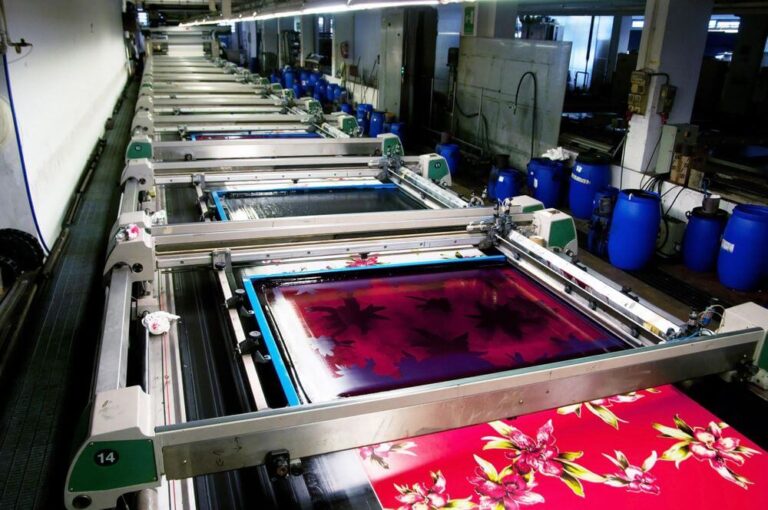
Aspects of the Creative Economy in the Goyor Sarong Industry
The Goyor sarong industry is part of the creative economy sector which is rich in local traditions and arts. In the creative economy aspect, the production, design and marketing of Goyor sarongs not only creates economic value, but also promotes cultural heritage and local identity. This industry provides economic opportunities for local communities and develops local tourism by introducing its cultural riches to the world through innovation in design, use of quality materials and effective marketing.
1. Design Innovation and Creative Collaboration
The goyor sarong industry has huge potential in the creative economy sector. Local designers continue to innovate by creating new motifs and patterns that combine traditional and modern elements. Collaboration between designers and traditional fabric craftsmen creates unique products that have high added value. Initiatives like this not only increase the competitiveness of products in the market, but also help preserve local cultural heritage.
2. Product Development Based on Local Story Telling
Utilizing local stories and identities as part of a marketing strategy can increase the appeal of Goyor sarongs in the market. For example, products that tell the story of the origin and process of making goyor sarongs can create an emotional bond with consumers. Using motifs and colors that have certain cultural meanings can also increase the selling value of the product.
3. Digital Marketing and E-commerce
With the development of digital technology, marketing of Goyor sarongs can be done through various online platforms. The use of social media and e-commerce sites allows producers to reach a wider range of consumers, both at home and abroad. Creative and effective marketing campaigns on social media can increase brand awareness and sales significantly.

4. Education and Training
To ensure the continuity of the Goyor sarong industry, there is a need for education and training for the younger generation. Training programs can focus on goyor sarong making techniques, textile design, and business management to help create a skilled and innovative workforce. Collaboration with vocational education and training institutions such as “Balai Pelatihan Vokasi dan Produktivitas (BPVP)” can strengthen the creative industry ecosystem in Indonesia.
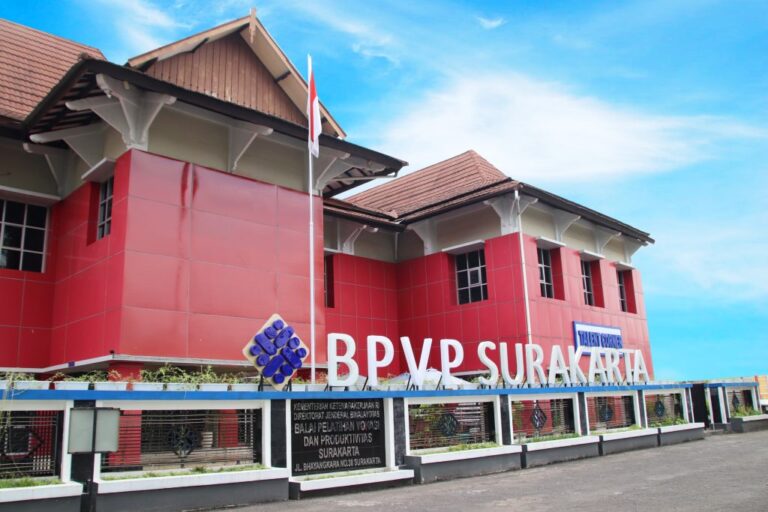
Goyor Sarongs in Popular and Modern Culture
In the 21st century, goyor sarongs experienced a resurgence in popularity. Many Indonesian designers and fashion activists are starting to include goyor sarongs in their collections. This sarong is not only used as traditional clothing, but is also adapted into various modern fashion products such as dresses, trousers, shirts and accessories.
This revival is supported by various campaigns and cultural festivals aimed at promoting Indonesia’s textile heritage. Goyor sarongs can also be displayed at cultural exhibitions and fashion shows, both at home and abroad. This helps increase public awareness and appreciation of traditional Indonesian textile products.
Challenges and Opportunities in the Future
Although goyor sarongs have achieved significant success, the industry still faces various challenges. One of the main challenges is competition with cheaper imported textile products. Apart from that, the regeneration of young craftsmen is also an important issue because many of the younger generation are less interested in continuing this weaving tradition.
However, there are many opportunities that can be exploited to overcome this challenge. Government and various institutions such as “Balai Pelatihan Vokasi dan Produktivitas (BPVP)“ can play an important role in supporting the Goyor sarong industry through various training, funding and promotion programs. Education and training for young people on the importance of preserving cultural heritage can also help ensure the industry’s survival.
Goyor sarongs are one of the textile products that are the pride of Indonesia. With a long history and rich cultural values, goyor sarongs are not just cloth, but also a symbol of identity and cultural heritage that must be protected and preserved. Starting from its initial appearance in Central Java to its role in the modern fashion industry, the Goyor sarong has demonstrated its durability and adaptability amidst changing times.
With the right strategy, government support, and active participation from the community, Goyor sarongs have great potential to continue to develop and compete in local and global markets. This industry not only provides economic benefits, but also strengthens Indonesia’s cultural identity in the eyes of the world. Let’s protect and preserve the Goyor sarong as Indonesia’s cultural heritage and identity.
